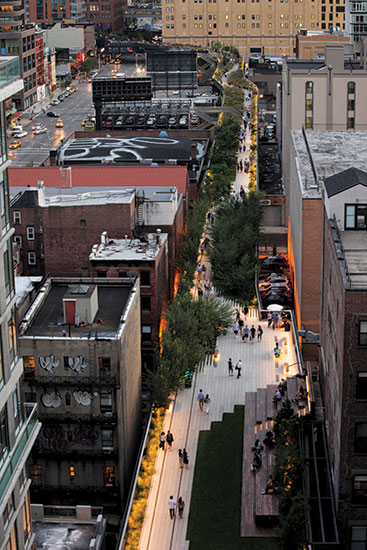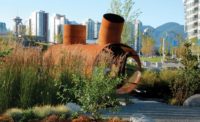Editor's Note: The High Line will reopen on July 16, 2020, with free timed-entry passes available online beginning July 9.
On Wednesday, April 1, New York Governor Andrew Cuomo ordered all playgrounds in New York City to be shuttered—the latest in a string of coronavirus-related closures. In Chicago, for instance, the lakefront, adjacent parks and beaches, and all fieldhouses and playgrounds closed on March 21. All public hiking trails in Los Angeles are closed as of the following weekend, along with recreation centers and beaches. In Florida, all 191 state parks—including public beaches—have closed. And back in New York, the High Line closed on March 16.

Designed by James Corner Field Operations, Diller Scofidio + Renfro, and Piet Oudolf, the elevated greenway, built on a former rail line, spans almost 1.5 miles across Manhattan’s West Side. With some 8 million visitors each year, it is a popular—and crowded—destination, drawing tourists and locals alike.
James Corner, founder of James Corner Field Operations and designer of other projects in the city including the 5-acre Domino Park on the Brooklyn waterfront, says he isn’t surprised by the actions. “It’s really got to do with scale,” he tells RECORD. “The reason you see the High Line close down, and maybe some other public spaces, is that they’re just not as big. The social distancing issue is the problem.”
Marion Weiss and Michael Manfredi also understand the need to adapt and take precautionary measures. “Parks, when generously conceived, are social equalizers of urban life,” the New York–based architects tell RECORD. “This is no time to close parks and urban spaces, yet at this moment, the social protocols need to be modified in these settings.”
The decisions officials make during this pandemic could have implications for the future of designing for the public realm, for example, by renewing interest, Corner speculates, in creating larger parks. “The lesson from this is that the pocket parks and linear parks we’ve seen in the past 50 to 60 years are great assets, but we also need to recognize and value the bigger parks.” Corner noted how Central Park and Prospect Park—New York’s grand, 19th-century green spaces, designed by Frederick Law Olmsted and Calvert Vaux—were situated on well-drained and well-circulated land, specifically to prevent the spread of diseases like tuberculosis, which ran rampant in tenements and poorer neighborhoods at the time.
Parks have a keen ability to support more than just physical wellness, Corner says, especially in urban areas. “Seeing vegetation, water, and other people, while hearing bird song and being exposed to the weather [is to] have a sense of big nature in a city,” he says. “These are designed characteristics that really uplift the spirit.” Weiss and Manfredi echo that sentiment, saying, “It’s not just the physicality of being outdoors, but the healing effects of nature in a more profound way.”
When asked whether lingering fear and paranoia might keep parks empty even after the global coronavirus pandemic subsides, Corner is optimistic: “The human craving for space will always be there.”






Post a comment to this article
Report Abusive Comment